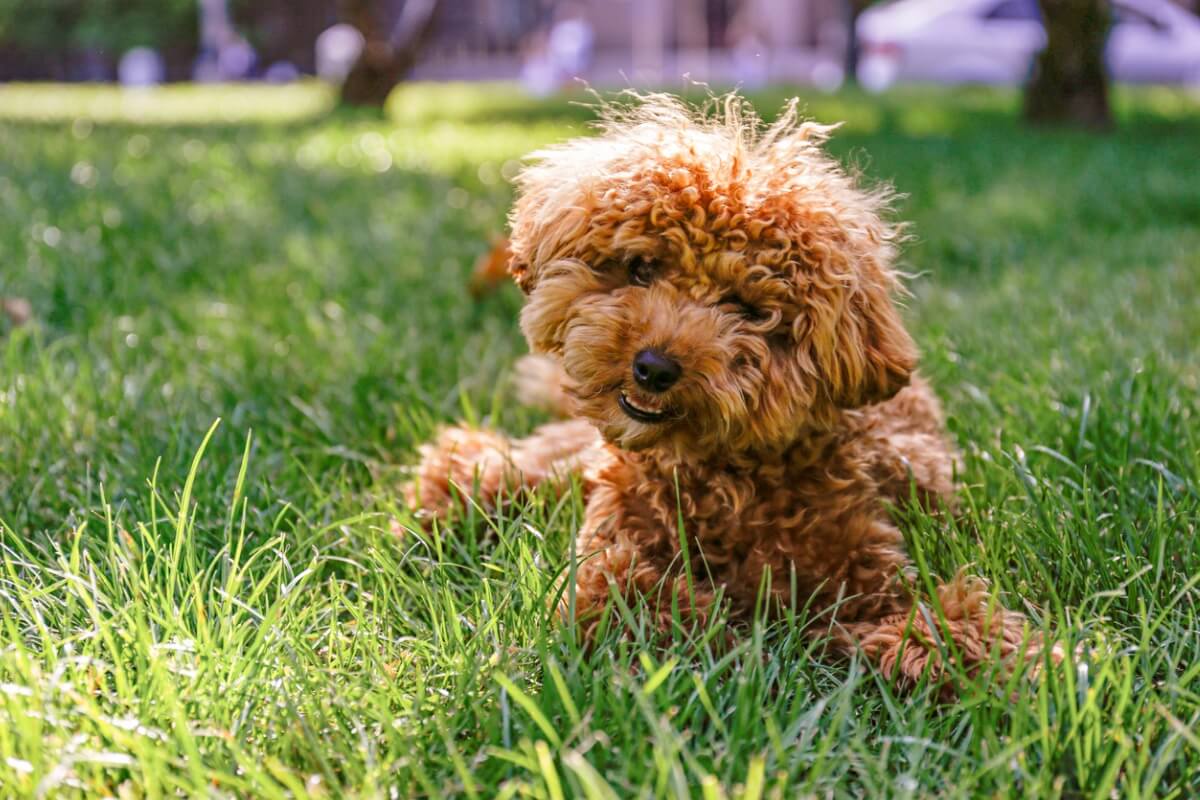Maltipoo: All About this Breed

If you like affectionate dogs, with fluffy fur and a desire to play all day long, the Maltipoo is your best option. This friendly canine is a crossbreed between the Maltese and the Poodle, a mix that has become increasingly popular around the world since the last century.
In this article, you can explore the characteristics of this breed, as well as its character, its special needs and the most common health problems that affect these small dogs. Don’t miss anything, because this dog will win your heart when you discover more about it!
Maltipoo’s characteristics
The Maltipoo is a small-sized dog, or toy dog, and doesn’t usually exceed 3 kilograms (6.6 pounds) in weight. Despite this average, and depending on the size of their parents, you can find larger specimens of up to 7 kilograms (15.5 pounds), as poodles have a very variable size.
It’s estimated that the life expectancy of these dogs is about 12-14 years. From the moment they’re born their fur is dense and smooth, with a very nice fluffy feel to the touch. Its coat is considered suitable for people with mild allergies to dog epithelium, because they do not release almost hair.
The color of its mantle is usually white, although it may vary depending on the tone of its parent poodle. Blue, grey, brown, black and cream are accepted as standard. However, at present, there’s no problem with its characteristics at the cynological level, as it’s still not recognized as a pure breed, due to it being a hybrid.

Origin of the breed
This crossbreeding was established under the name of Maltipoo very few years ago; it began to be popularized in the United States in the decade of the nineties of the last century. At first, breeders sought to create a breed whose coat was hypoallergenic, since both parents share this characteristic. However, its sociable and affectionate character was what made it famous in American homes.
Character of the maltipoo
Since both the poodle and the Bichon Maltese are very intelligent breeds that tend to be attached to their owners, the Maltipoo has inherited these same characteristics. It’s a dog that stands out for its quick learning and affectionate personality.
The Maltipoo gets along wonderfully with children and elderly people thanks to its cheerful and active character, and is even used as a therapy dog. However, it doesn’t tolerate loneliness very well, as the bond it establishes with its owners is a strong one, and it could suffer from separation anxiety. It isn’t a breed suitable for people who live alone or who spend a lot of time away from home.
Special care
As you may have been able to deduce from the previous lines, the greatest need of this dog is to have a healthy and satisfactory relationship with its human family. If you decide to take a Maltipoo into your home, you must be sure that you’ll be able to give it all the time it needs, as it tends to be emotionally dependent.
Continuing with its emotional needs, you must also take into account its active and intelligent nature. They should always have toys available and be taught to amuse themselves on their own. In this way, you prevent emotional dependence and avoid anxiety disorders that can appear when the environmental stimulation of the dog isn’t enough.
It’s a good idea to buy several toys and rotate them from time to time so they don’t get bored of them too quickly.
Since their hair is long and thick, another essential need for the Maltipoo is daily brushing. If you let it tangle and form knots, it could become clumped and prevent the skin from breathing properly, which will lead to skin problems.
General health of the Maltipoo
Although the Maltipoo is a breed with a fairly good health, it tends to suffer more from certain diseases than other dogs due to the genetic inheritance of its two parent breeds. The most frequent ailments are the following:
- Progressive retinal atrophy: This is a degenerative disease, and there’s no cure. However, its early diagnosis allows treatment to delay its progression.
- Pancreatitis: Inflammation of the pancreas. Depending on whether it’s acute or chronic, it may require lifelong treatment.
- Patellar dislocation occurs when the kneecap slips out of the joint. If it’s a congenital defect, you’ll need surgery to correct it.
- Epilepsy: This mainly affects puppies and may correct itself or require lifelong treatment.
- White Shaker Syndrome, also known as generalized tremor syndrome or idiopathic cerebellitis, is an inflammation of the cerebellum that causes tremors and motor incoordination.
- Cryptorchidism: This is a defect in the descent of one or both testicles into the scrotum. It usually requires surgery.
- Oral issues: These problems come, above all, from the Maltese.

Although this may appear to be quite a long list, the general health of the Maltipoo is quite good. Regular vet check-ups and optimal care should be the perfect basis for you to enjoy this wonderful dog for many years to come.
All cited sources were thoroughly reviewed by our team to ensure their quality, reliability, currency, and validity. The bibliography of this article was considered reliable and of academic or scientific accuracy.
- Flores Baptista, R. S. (2019). Programa canoterapia para desarrollar habilidades sociales en niños con Sindrome de Asperger de primaria de la Unidad Educativa los Pinos de La Paz (Doctoral dissertation).
- Hünning, P. S., Rigon, G. M., Aguiar, J., Stedile, R., & Colome, L. M. (2010). Shaker dog syndrome. Acta Scientiae Veterinariae, 38(2), 209-212.